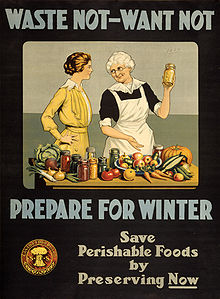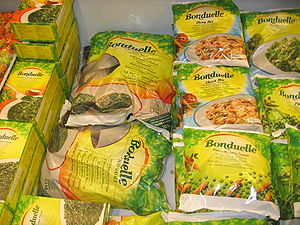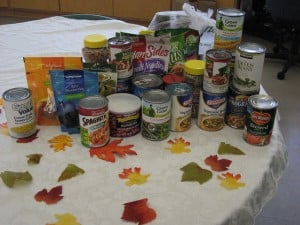“I can’t eat local–what would I possibly eat in January–turnips?!”
Not necessarily. Because whether you grow your own food or purchase locally grown food, you can PRESERVE some of it for winter! And it doesn’t have to be complicated. You don’t need any special skills or equipment, unless boiling water is beyond your skill-set and a colander isn’t among your kitchen tools. And you know what? Many, many vegetables are BEST preserved by freezing rather than canning. (Think of the difference between frozen green beans and canned–which is most like fresh?)
True, some of the flavor and texture is lost through the freezing process, which is why you will prepare your frozen veggies differently than you would if they were fresh. You might make a Caprese salad with fresh tomatoes, like so:
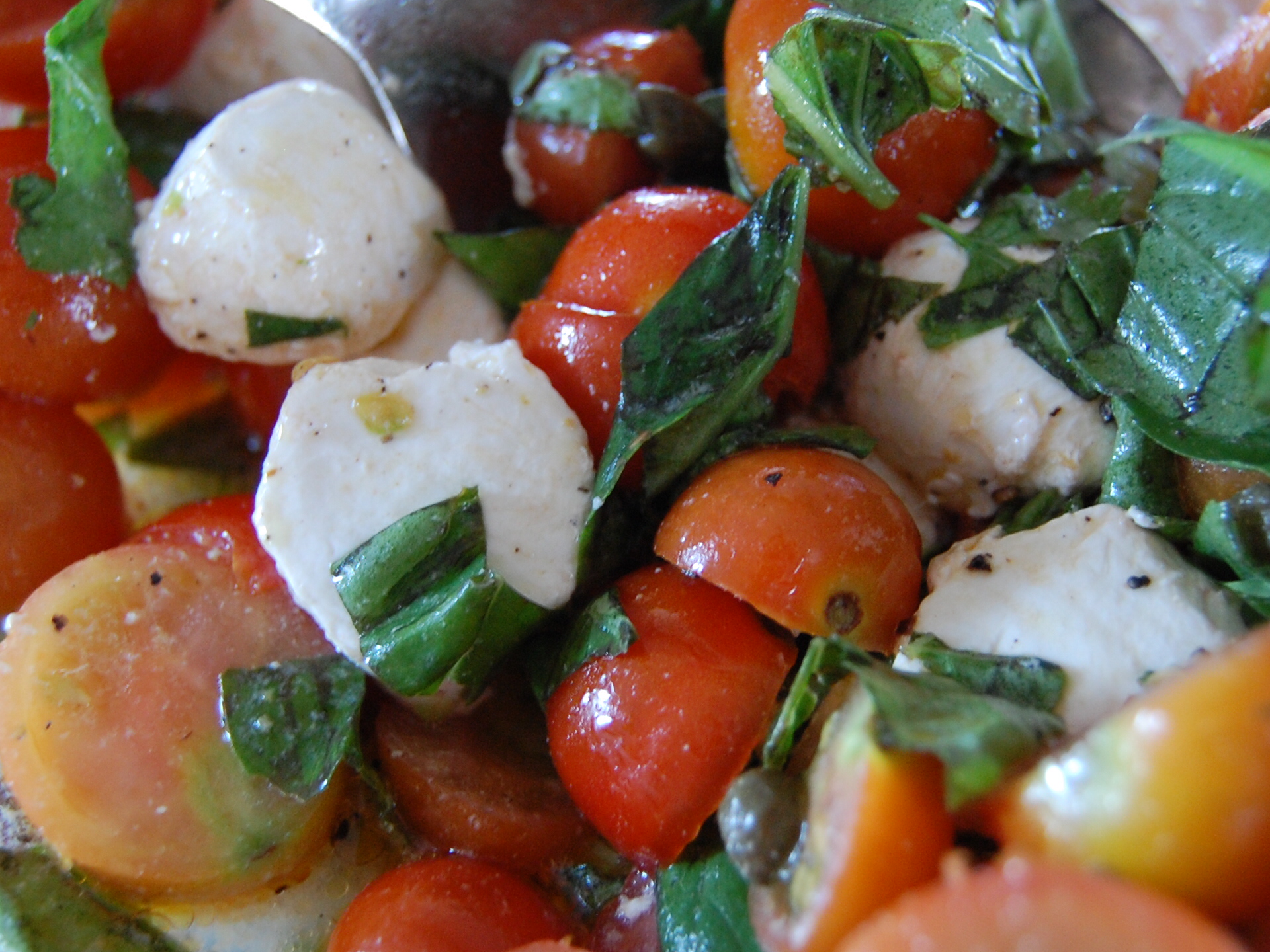
But you couldn’t replicate that salad in winter by pulling out the frozen tomatoes. You could, however, put them into any number of delicious soups, stews, and sauces. And, as Barbara Kingsolver points out, since they won’t have traveled any distance in the meantime–they’ll still be local.
“But what about VITAMINS? Aren’t fresh vegetables healthier than and preferable to frozen ones?!”
Actually, very few vitamins are lost in the freezing process. Even commercially frozen foods can be nutritionally superior to their fresh (but imported) counterparts, because food is frozen at the peak of freshness. By contrast, fresh vegetables transported long distances lose a marked amount of vitamins over the course of their trip from the field to your plate.
And as to the question of environmental friendliness, I certainly feel better about buying US-grown frozen broccoli in December than buying broccoli that has been shipped FROM CHILE.
To reiterate–you don’t necessarily have to grow your own. In fact, if you can find a local source for vegetables (and no matter where you live, you probably can), you may get a discount for purchasing a large amount in bulk. This helps the farmer and it helps you–if you know how to preserve the food. For example, local farmstands where I live are currently charging about 70 cents per ear of corn. If you buy a bushel (about 40 ears) it costs $10.
So what do you do with those hypothetical ears of corn? This method is the simplest and easiest and applies to many, many different vegetables:
1. Dip prepared (ie, trimmed and cut) vegetables into boiling water for 3 minutes.
2. Immediately dunk into COLD water and rinse to stop the cooking.
3. Pat dry with clean kitchen towels and pack into freezer containers/bags.
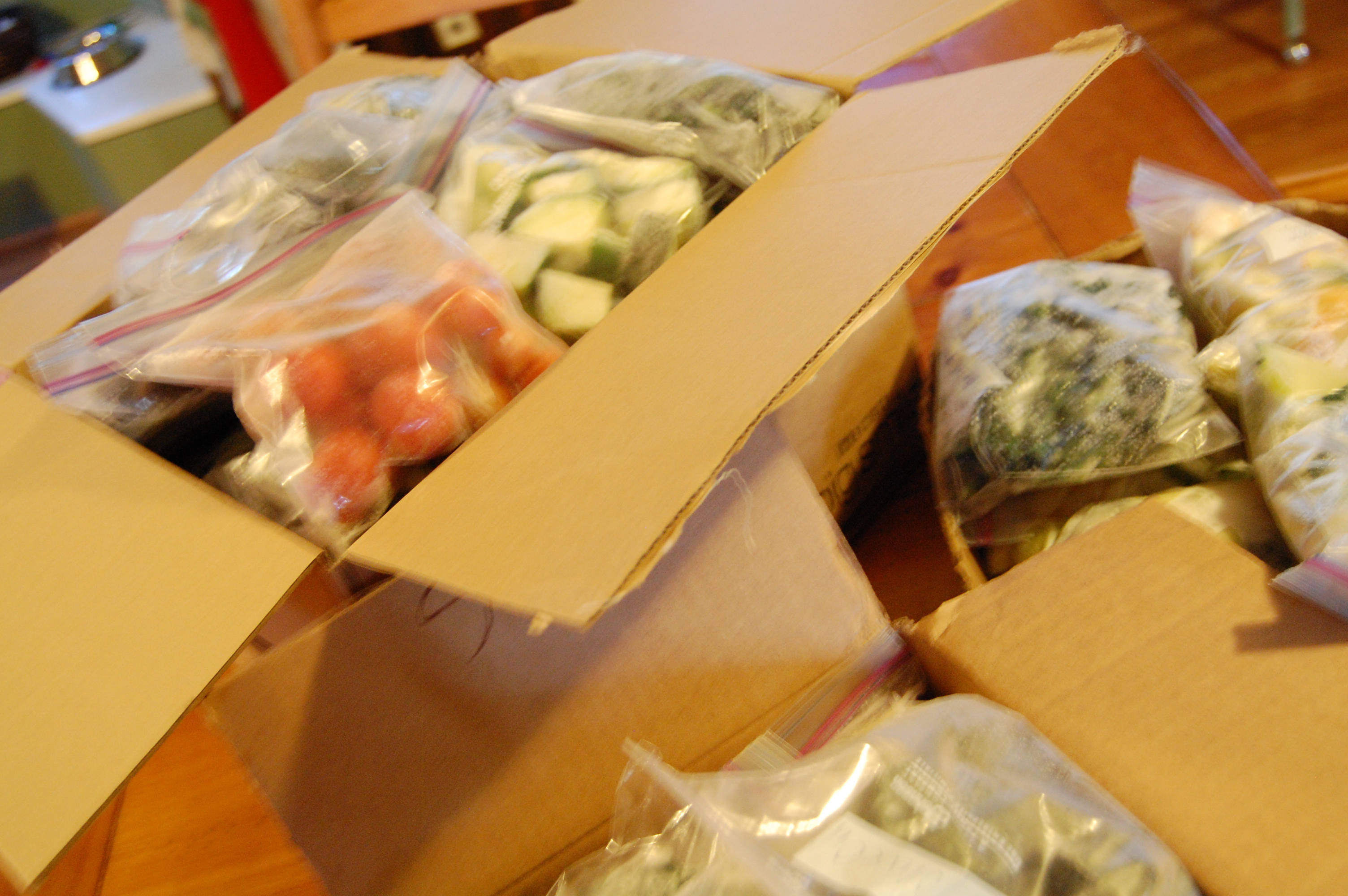
*UPDATE*
Ellen asked whether I have a dedicated freezer. I do–it’s one we’re borrowing from church, since they’re not currently using it. If that one wasn’t available, I’d be shopping around for a second-hand freezer, for sure. They’re quite energy-efficient (since they are opened only once in a while). Of course, space for a freezer is not always in great supply, especially if you live in an apartment (which I have done most of my adult life.) So this defense of frozen food may be somewhat unfairly biased toward home-dwellers. However, the basic point–freezing food isn’t hard!–still stands.
*END OF UPDATE*
That’s it! You can readily get more details in this book or elsewhere on the net. (UPDATE: lovely tutorial here.) Or you can ask me! (Not that I’ll know the answer, but I’d be happy to hear about whatever preservation adventures you may be on…)
Oh, and some of my favorite winter recipes take frozen vegetables very well. You can see them here!
And the best part? When you’ve frozen your own veggies in summer and fall (whether home grown or grown locally by someone else), you get a bit of a taste of the warmer months during the colder ones. And that’s fun!

